Why Palestinians throw stones: A reporter's notebook
Stone-throwing is not just a physical act but a deeply symbolic gesture.
London -- The date was Oct. 29, 2000, exactly one month after Israeli opposition leader Ariel Sharon made a historic and provocative visit to the Haram al-Sharif, also known as the Temple Mount complex in Jerusalem. The Al-Aqsa mosque, which lies on the compound, is one of Islam’s most sensitive and holy sites.
The visit by Sharon, reviled by Palestinians for his role in the 1982 massacre at a Palestinian camp in Lebanon, ignited a wave of protests and riots that turned into the second Palestinian uprising.
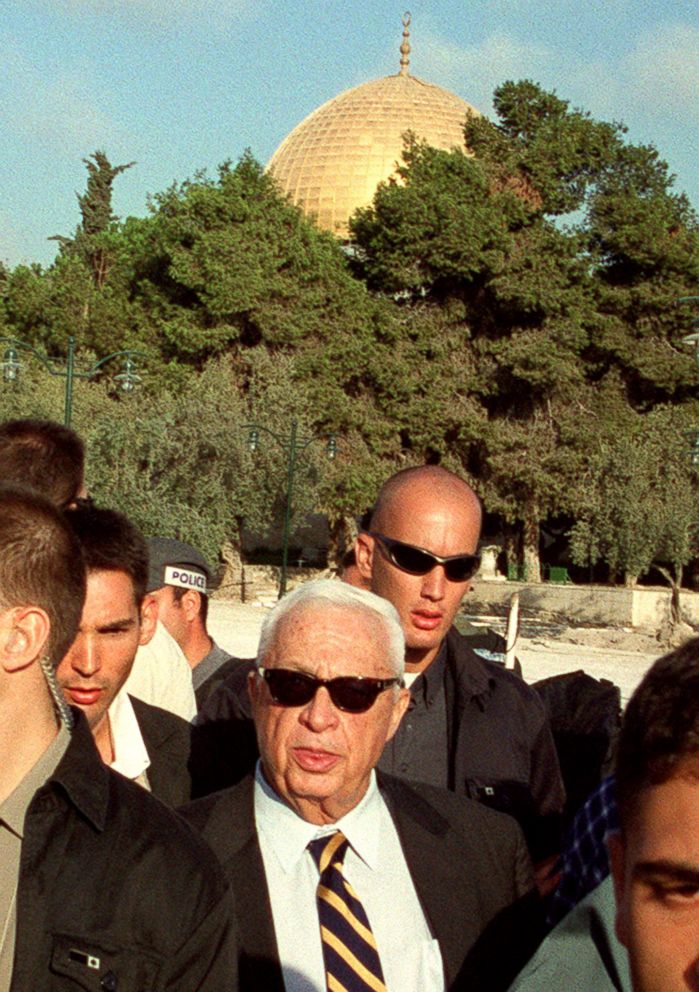
Among the protesters was a 14-year-old Palestinian boy who was throwing rocks at Israeli soldiers near a Jewish outpost in Gaza. A photographer from The Associated Press captured the boy in an iconic image -- his right arm bent back to launch a rock toward an Israeli tank directly in front of him – that crystallized the very spirit of their resistance.
Indeed, the act of throwing rocks at Israeli soldiers has become a symbolic act of defiance and resistance for the Palestinians. The juxtaposition between boys and men armed with stones against the Israeli military has drawn comparisons to biblical foes David and Goliath.
Like the kaffiyeh, the checkered Arab scarf that Palestinians sometimes use as a shield -- against tear gas, and to hide their identities -- the stone has become a symbol of their struggle.
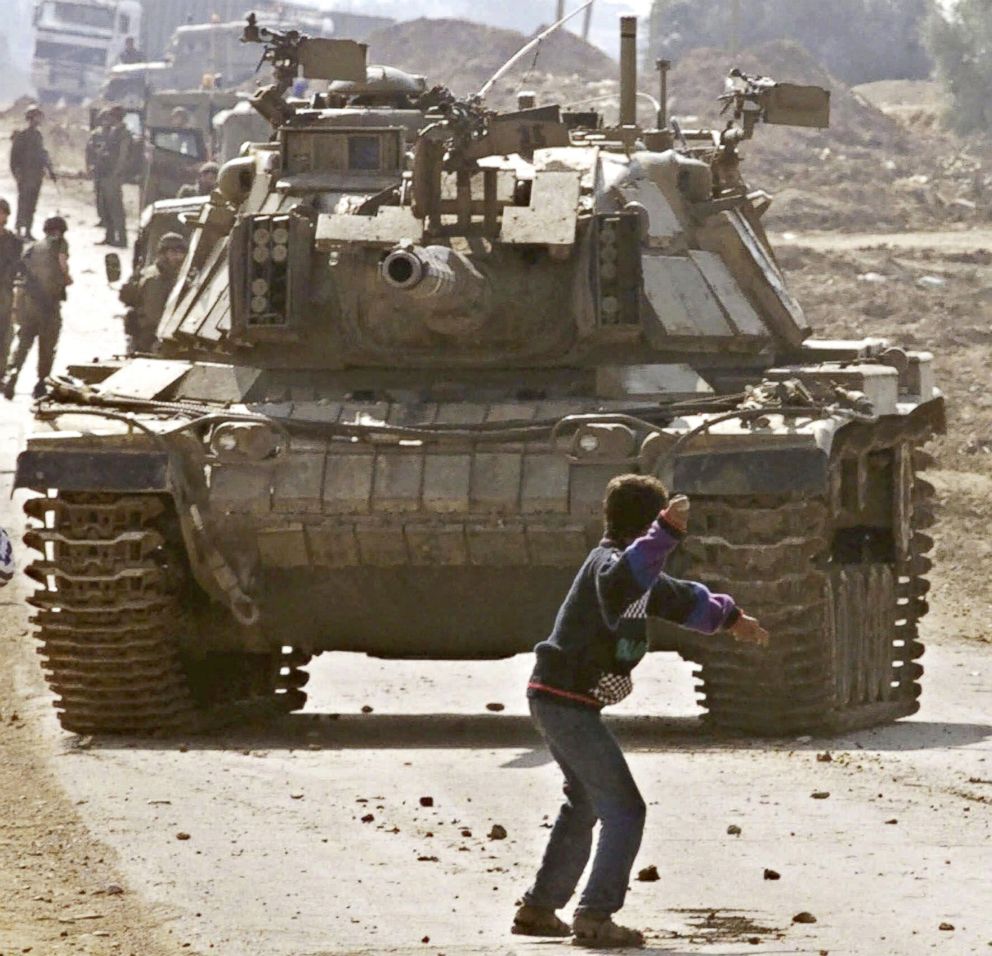
Hundreds of miles to the north, displaced Palestinians in disparate camps scattered across Lebanon have splashed hundreds of images of catapults and slingshots on the walls of their shanty houses.
In 2013, I had asked a Palestinian living in Burj al-Barajneh in Beirut why it was “a thing” for boys and men to pick up rocks and throw them at soldiers who massively outgunned them.
He explained that throwing stones was a defining act of Palestinian identity. The whole point, he said, was not to use the stones to defeat Israeli soldiers armed with rifles. It was a symbol of brazen defiance in the face of hopeless and inevitable defeat that epitomized how many Palestinians feel about their conflict with Israel.
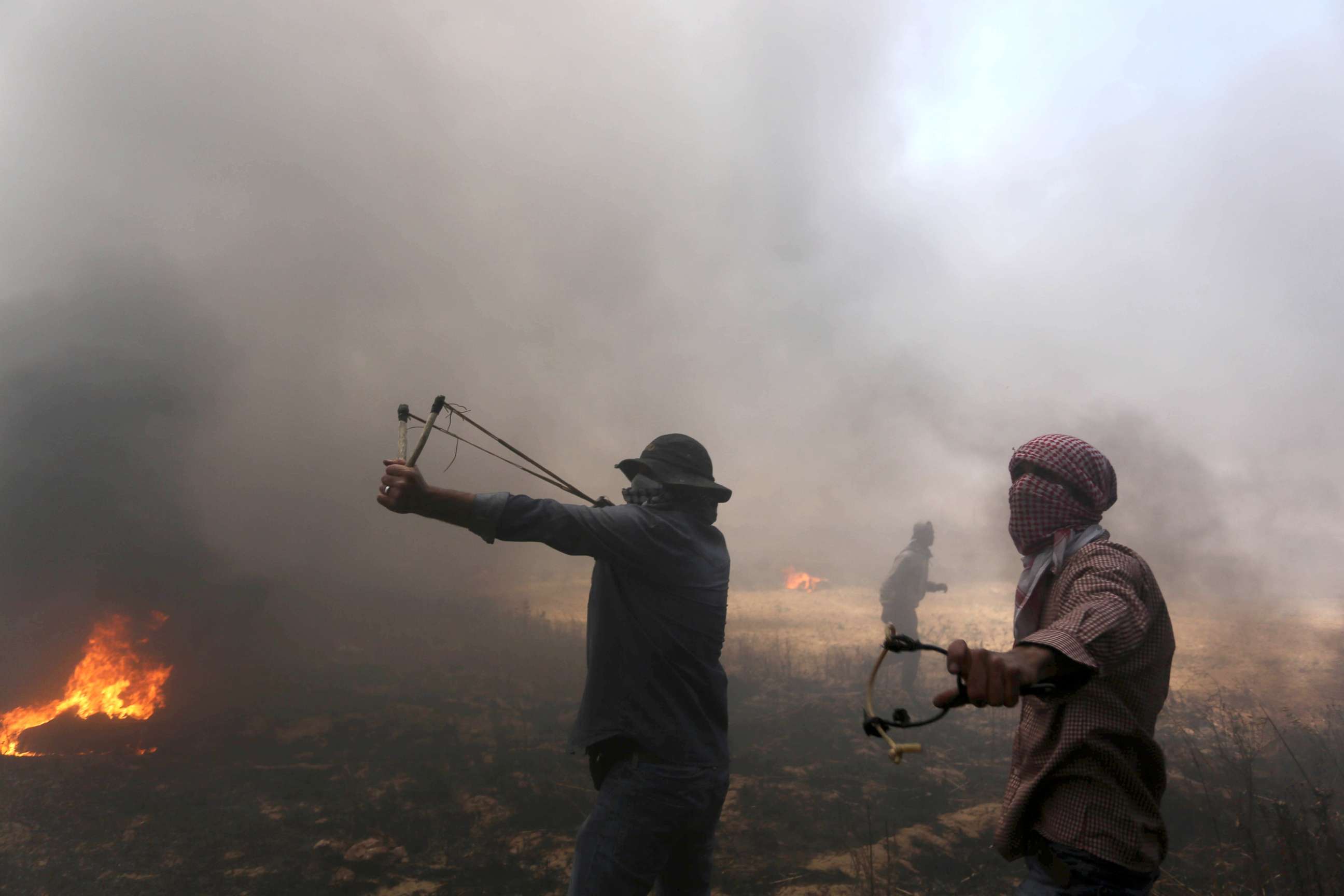
Often my conversations in the field fade with time when they aren’t recorded in my notebook. But I remember the following words from my guide in Bourj el Barajneh: “We do not throw stones because we are Palestinians. We are Palestinian because we throw stones.”
To be clear, though, catapults and slingshots can kill.
In September 2015, an Israeli man in his 50s was killed after his car came under attack from a group of Palestinians throwing stones at cars in East Jerusalem.
While many Palestinian boys use one-handed catapults no larger than their arm, I have seen protesters in groups operating thick elastic bands similar to those used in gyms, stretched out between three people with one pulling the cords taut, a jagged rock the size of a fist in the cradle of the sling before releasing at a terrifying velocity.
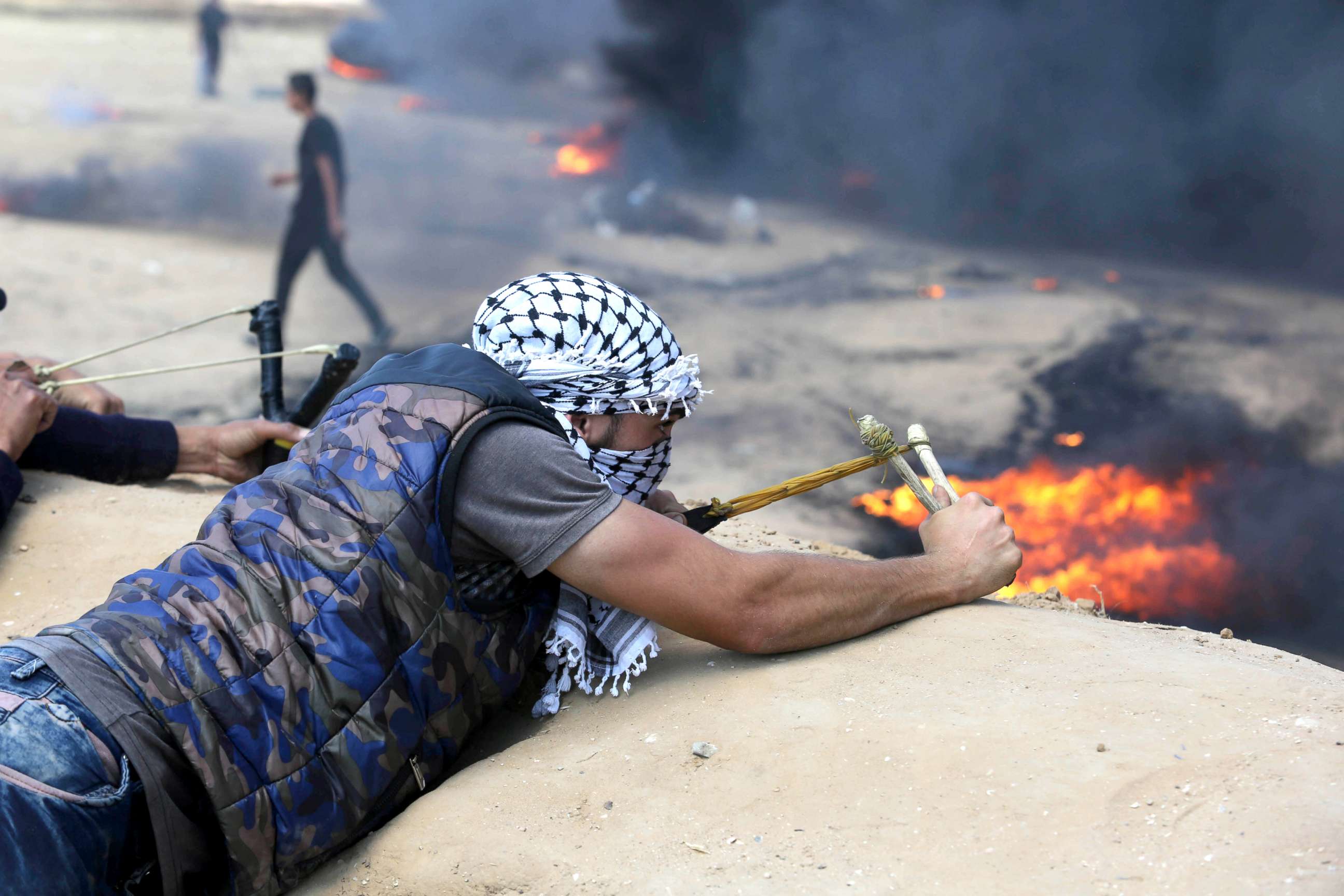
Hitting someone in the head could easily cause death, which is why the Israeli military takes stone throwers seriously.
The Israeli parliament in 2015 voted to toughen prison sentences for stone throwers in an attempt to discourage protesters from picking up rocks.
In the current wave of violence occurring between the Gaza Strip and Israel, a disabled protester named Saber al-Ashkar was photographed Tuesday by AFP in his wheelchair in Gaza’s buffer zone, surrounded by pillars of black smoke from burning tires, his arms outstretched and hurling a stone from his slingshot.
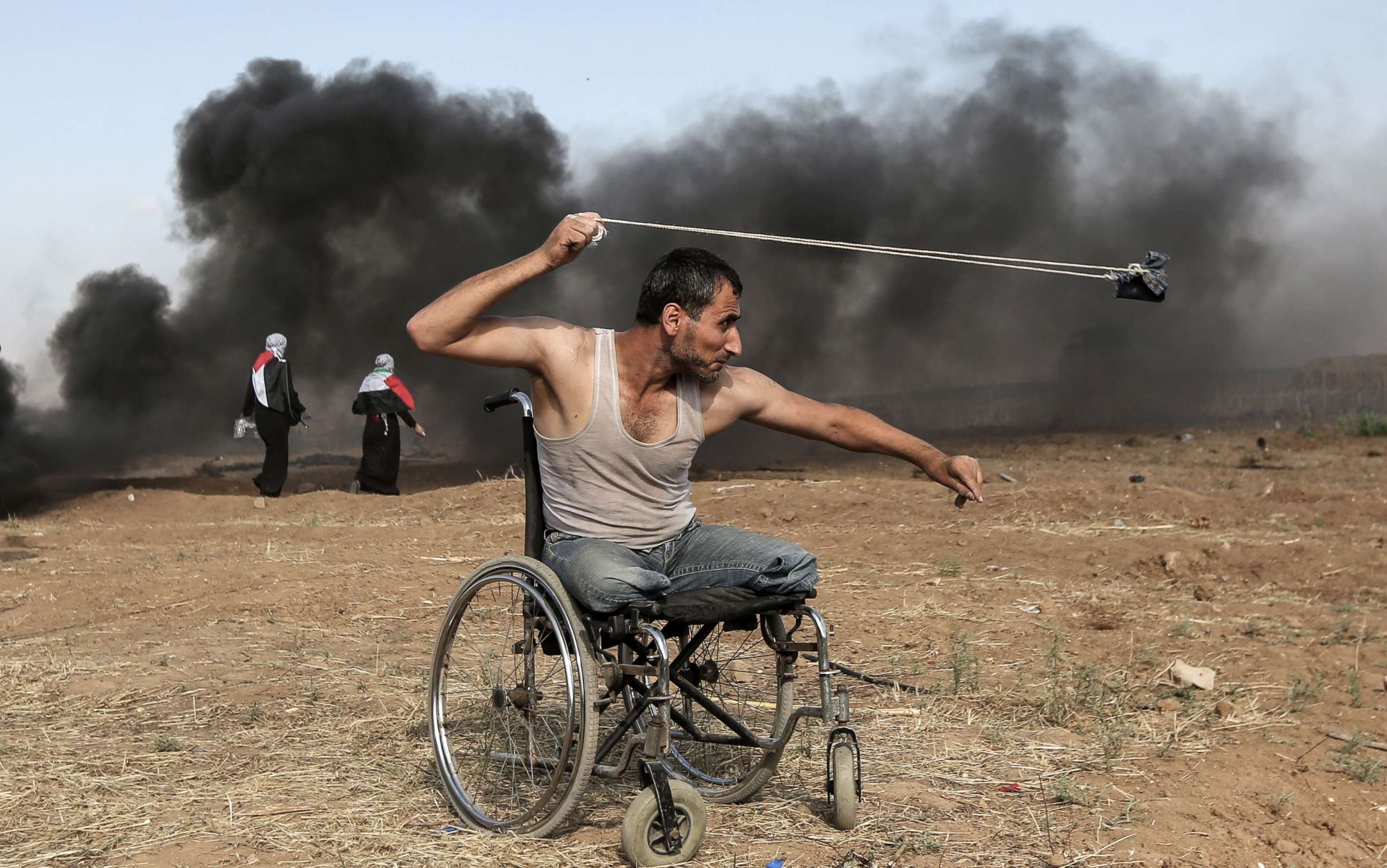
Social media users from around the world were baffled at why this man, who already lost his legs, was provoking the lines of Israeli snipers, by catapulting rocks at them:
“Why was he throwing stones?” “Why hurl rocks when it’s obvious there will be retaliation?”
The teen who threw rocks that day in 2000, now instantly recognizable to Palestinians everywhere as Faris Odeh, is an example of someone who paid for his actions. He was shot dead a week later by Israeli troops while throwing stones at them again.




